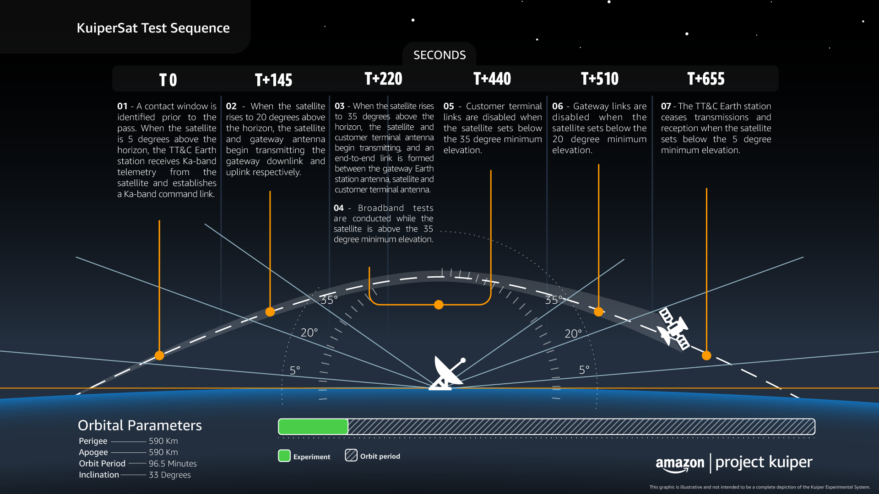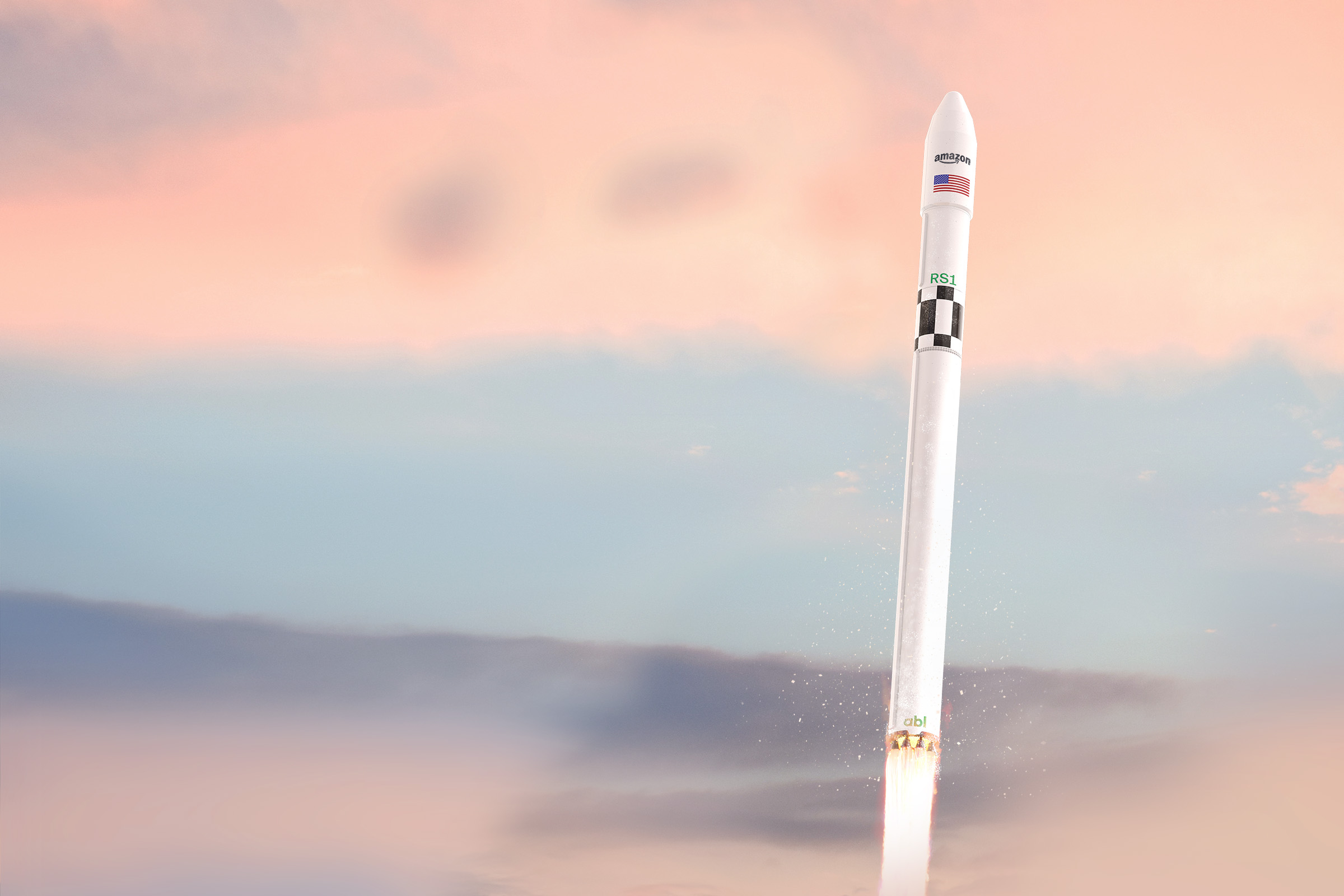TAMPA, Fla. — Amazon has signed a multi-launch deal with rocket developer ABL Space Systems, which plans to loft two prototype satellites for its Project Kuiper broadband megaconstellation next year.
ABL Space Systems aims to place the KuiperSat-1 and Kuiper-Sat-2 prototypes in low Earth orbit (LEO) by the fourth quarter of 2022 with its small launch vehicle RS1, which is counting down to its first launch late this year.
Amazon filed an experimental license application with the Federal Communications Commission Nov. 1 for the test spacecraft, which will not be part of the roughly 3,200 broadband satellites that Project Kuiper envisages for its operational constellation.
An Amazon official said KuiperSat-1 and Kuiper-Sat-2 will be designed for “atmospheric demise,” enabling them to be actively de-orbited following a testing mission it expects to last less than two years.
“All of the systems are testing well in simulated and lab settings, and we’ll soon be ready to see how they perform in space,” Project Kuiper vice president of technology Rajeev Badyal said in a blog post.
“There is no substitute for on-orbit testing, and we expect to learn a lot given the complexity and risk of operating in such a challenging environment.”
Amazon declined to disclose the performance it expects to achieve from KuiperSat-1 and KuiperSat-2, but said they will include much of the technology and subsystems that will power its production version.
The company has previously said Project Kuiper will offer speeds on par with terrestrial broadband networks. In a blog post late last year, Amazon said its customer terminal antenna prototype was “delivering speeds up to 400 Mbps (Megabits per second), and performance will continue to improve in future iterations.”
The Amazon official said the phased array and parabolic antennas that will connect to KuiperSat-1 and KuiperSat-2 will also be prototypes of its final design.
“They are similar to the final version, but we expect we’ll have learnings that get incorporated into final antenna designs,” the official said.
Each individual test will take no more than six minutes, the official added, and each KuiperSat will have five or fewer active testing contact windows per day.

Amazon has to deploy half its Project Kuiper constellation by July 2026 under its license conditions, and deploy the rest by July 2029.
The company said the development and manufacturing of Project Kuiper’s operational satellites will continue in parallel with its upcoming prototypes.
“Our manufacturing schedule will allow for us to incorporate any learnings from KuiperSat-1 and KuiperSat-2 into our final designs,” the Amazon official added.
According to regulatory filings, Amazon expects to deploy the Project Kuiper constellation in five phases. The first calls for 578 satellites to be placed at 630 kilometers altitude at an inclination of 51.9 degrees.
In April, Amazon said it ordered nine Atlas 5 rockets from United Launch Alliance to help deploy the network, without a time frame.
The company has committed an initial $10 billion to develop Project Kuiper and said Nov. 1 that more than 750 people are currently working on the constellation. It expects to add hundreds more to the team in the coming year.
Betting on a startup
ABL is preparing to perform its first RS1 launch from Kodiak Island, Alaska, with a launch period extending to Dec. 15.
Despite its lack of launches, the rocket builder recently raised an additional $200 million in a funding round valuing it at $2.4 billion.
The financing came just seven months after ABL secured $170 million in a funding round valuing it at $1.3 billion.
ABL plans to use proceeds to scale up RS1 production to meet its projections for eight launches in 2022 and 16 in 2023.
The California-based company said RS1 can place up to 1,350 kilograms into LEO, using a launch system called GS0 that can be fully containerized and moved to different locations.
Amazon said the mobile launch platform provides the speed and flexibility it will need for its early launch missions.
“We have been impressed by ABL’s unique capabilities, rapid development progress, and dedication to customers, and RS1 delivers the right capacity and cost-efficiency to support our mission profile,” the Amazon official added.
The internet giant said it has already completed two integration design reviews with ABL after working together for several months, including plans for an adapter design.
Amazon expects to complete an initial fit check with ABL early next year for KuiperSat-1 and KuiperSat-2, which it said will launch from the Cape Canaveral Space Force Station in Florida.
